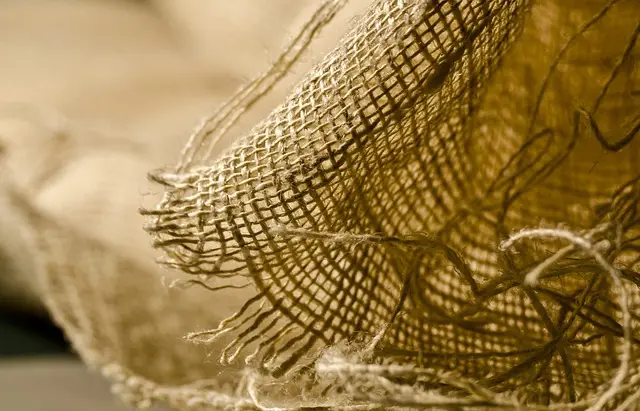Red Bali Kratom and Maeng Da are two strains of kratom from the Mitragyna speciosa tree, each with distinct alkaloid profiles that cater to different aspects of athletic recovery. Red Bali is known for its balanced effects of pain relief, sedation, and energy, making it ideal for managing post-workout muscle and joint discomfort due to its high levels of 7-hydroxymitragynine along with mitraphylline and 9-hydroxycorynanthene. This strain is particularly suited for athletes seeking relaxation and stress relief as part of their recovery process. On the other hand, Maeng Da has a higher concentration of alkaloids, providing robust pain relief and stimulating effects that can enhance mental clarity and focus. Its analgesic properties, attributed to high levels of mitraphyne and 7-hydroxymitraphyne, are beneficial for athletes experiencing intense physical stress. Maeng Da also promotes restorative sleep, which is crucial for muscle repair. Athletes may choose between Red Bali and Maeng Da based on their specific needs and recovery goals, with careful consideration of individual physiology and the importance of adhering to recommended dosages and professional medical advice. Both strains should be used judiciously for a safe and effective recovery process. Maeng Da is particularly distinguished in athletic recovery due to its unique balance of energy and analgesia, offering advantages over Red Bali by promoting vigor during recovery without compromising restful sleep or overall performance.
Embark on a journey into the realm of athletic recovery, where the natural potential of Red Bali Kratom and Maeng Da strains are unveiled. This article delves into the transformative effects these kratom varieties can have on post-exercise restoration, offering a comparative analysis that will empower athletes in their pursuit of optimal performance and swift recuperation. Discover how integrating Red Bali Kratom and Maeng Da Kratom into a recovery regimen may serve as a strategic tool for enhancing overall athletic endurance and well-being. Join us as we explore the intricacies of these botanicals and their role in the recovery process, providing insights that could redefine your approach to training and recuperation.
- Maximizing Athletic Recovery: A Comparative Analysis of Red Bali Kratom and Maeng Da Strains
- Understanding the Nuances of Red Bali Kratom in Post-Workout Recovery
- Harnessing the Potential of Maeng Da Kratom for Enhanced Athletic Restoration
Maximizing Athletic Recovery: A Comparative Analysis of Red Bali Kratom and Maeng Da Strains

Athletes in pursuit of optimal performance and recovery are increasingly exploring alternative therapies to enhance their training regimens. Among these, kratom has gained attention due to its potential effects on pain management, mood elevation, and muscle relaxation—key factors for athletic recovery. In this comparative analysis, we focus on two prominent strains of kratom: Red Bali Kratom and Maeng Da. Both strains are derived from the Mitragyna speciosa tree, yet they exhibit distinct alkaloid profiles that may influence their efficacy in promoting athletic recovery.
Red Bali Kratom is renowned for its balanced alkaloid content, offering a blend of stimulating and sedative effects. Its pain-relieving properties are particularly noteworthy, making it a favored choice among athletes seeking relief from muscle soreness and joint discomfort post-exercise. The strain’s ability to alleviate chronic pain can be attributed to its rich content of 7-hydroxymitragynine, which synergizes with other alkaloids like mitraphylline and 9-hydroxycorynanthene to enhance overall comfort during recovery periods. On the other hand, Maeng Da Kratom, known as “Pimp Grade” in Thai, is celebrated for its high alkaloid concentration, which may lead to a more potent effect. This strain is often preferred by those who require a stronger analgesic influence for intense pain relief or for recovery following particularly strenuous workouts. Its stimulating effects can also aid in mental clarity and focus, which are essential components of an athlete’s training and rehabilitation process.
When comparing Red Bali Kratom vs Maeng Da, it is important to consider the individual athlete’s needs and the nature of their sports activities. Both strains offer unique benefits, but their effects can differ significantly based on personal physiology, the severity of physical stress experienced, and the specific recovery goals. Athletes considering kratom as part of their recovery protocol should approach its use with caution, adhering to recommended dosages and consulting with healthcare professionals to ensure safe and effective integration into their wellness routine.
Understanding the Nuances of Red Bali Kratom in Post-Workout Recovery

Red Bali Kratom has garnered attention in athletic communities for its potential role in post-workout recovery. Unlike its counterpart, Maeng Da Kratom, which is known for its invigorating and stimulating effects, Red Bali offers a more sedating profile that can aid in relaxation and stress relief after intense physical activity. This distinction in alkaloid composition between Red Bali and Maeng Da means athletes looking for restorative benefits might prefer the calming properties of Red Bali to facilitate a balanced recovery process. The alkaloids present in Red Bali, such as 7-hydroxymitragynine and mitragynine, are believed to contribute to its analgesic effects, which can be beneficial for managing muscle soreness and promoting a deeper state of relaxation conducive to tissue repair and rejuvenation. Athletes should approach the use of Red Bali Kratom with caution, however, as its effects can vary greatly depending on individual sensitivity, dosage, and tolerance levels. Coaches who specialize in kratom usage for recovery can provide valuable guidance on how to effectively incorporate Red Bali into an athlete’s post-workout regimen, ensuring that it complements the overall training and recovery strategy without interfering with performance or health.
Incorporating Red Bali Kratom into a recovery routine requires careful consideration of its potency compared to other strains like Maeng Da. While Maeng Da may offer more stimulating effects suitable for pre-workout energy, Red Bali’s pain-relieving and soothing properties make it more aligned with the body’s needs during the recovery phase. The choice between Red Bali Kratom and Maeng Da should be based on individual goals, as both have unique benefits. Coaches trained in kratom coaching can offer insights into the nuances of each strain, helping athletes to leverage their distinct properties for optimal athletic performance and recovery. It’s crucial for athletes to work closely with their coaches to determine the most effective way to use Red Bali Kratom as part of a comprehensive recovery strategy that aligns with their specific needs and goals.
Harnessing the Potential of Maeng Da Kratom for Enhanced Athletic Restoration

Maeng Da Kratom, a strain renowned for its potent alkaloid profile, stands out in the realm of athletic recovery. Unlike the frequently discussed Red Bali Kratom, Maeng Da is celebrated for its invigorating and analgesic properties, which are pivotal in supporting athletes’ recovery processes. The unique blend of mitraphyne and 7-hydroxymitraphyne found in Maeng Da Kratom contributes to its ability to reduce muscle soreness and inflammation post-exercise. Athletes who incorporate Maeng Da into their regimen often report a significant enhancement in their recovery, attributed to its capacity to promote relaxation without inducing drowsiness, allowing for restorative sleep that is crucial for muscle repair and growth. In contrast to other strains, the balanced effects of Maeng Da facilitate a recuperative state that can be leveraged before and after intense training sessions, potentially improving overall athletic performance through optimized recovery periods. Additionally, practitioners who have compared Maeng Da to Red Bali Kratom note that while both strains offer analgesic benefits, Maeng Da tends to provide a more energizing effect, which can be beneficial for athletes looking to maintain their vitality during the recovery phase without feeling lethargic. This makes Maeng Da a popular choice among those seeking to harness its unique attributes for enhanced athletic restoration.
In conclusion, the evidence presented in this article underscores the potential benefits of incorporating Red Bali Kratom and Maeng Da Kratom into an athletic recovery regimen. The comparative analysis between these two strains highlights their unique contributions to post-workout restoration, with each offering distinct advantages that can complement an athlete’s holistic health approach. While individual experiences may vary, the scientific and anecdotal evidence suggests that both strains hold promise for athletes seeking to optimize their recovery process. As with any supplement, it is advisable for athletes to consult with healthcare professionals before integrating kratom into their wellness routine, ensuring safe and effective use in conjunction with their training and dietary protocols. Red Bali Kratom vs Maeng Da Kratom presents a compelling case for the consideration of these strains as part of a balanced recovery strategy, potentially enhancing athletic performance and overall well-being.






